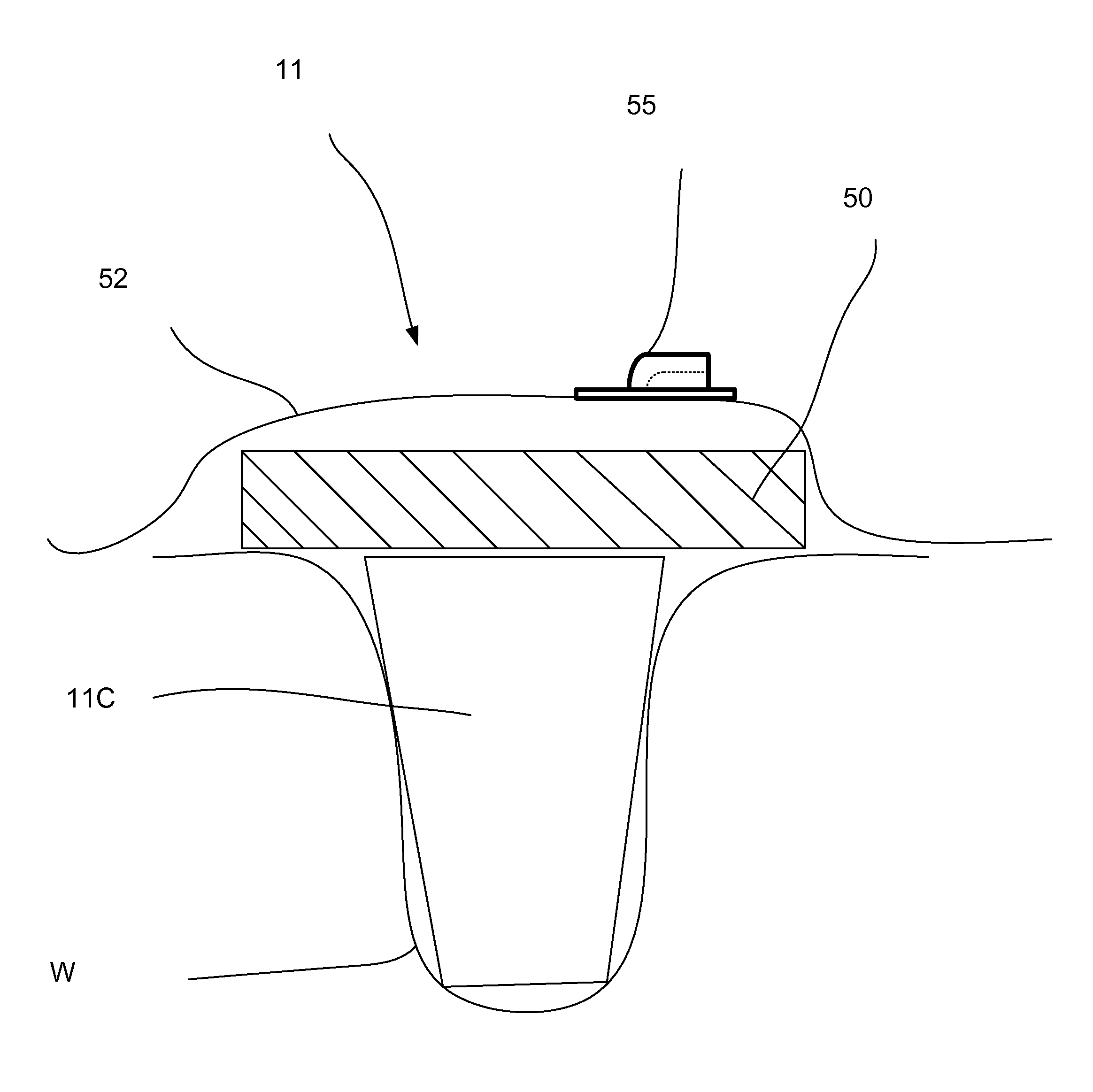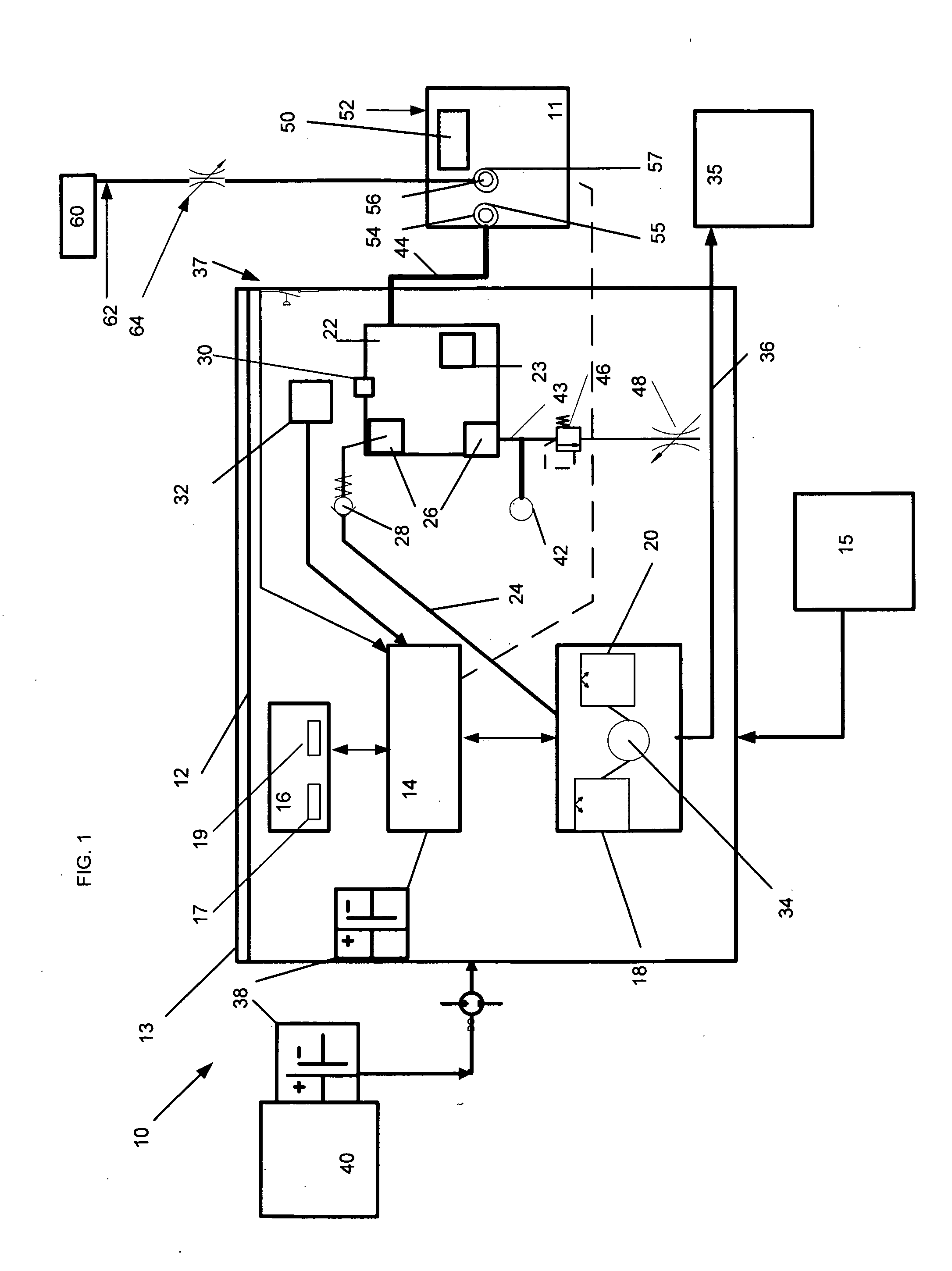Wound dressings for negative pressure therapy in deep wounds and method of using
a negative pressure therapy and wound dressing technology, applied in the direction of wound drains, bandages, dressings, etc., can solve the problem that the device using substantially planar dressings does not address various factors, and achieve the effect of improving wound healing
- Summary
- Abstract
- Description
- Claims
- Application Information
AI Technical Summary
Benefits of technology
Problems solved by technology
Method used
Image
Examples
Embodiment Construction
[0042]A wound W can extend well below the epidermis E of skin S and into the dermis D or hypodermis as depicted in FIGS. 1A and 1B. Wounds W may include tunnels, fistulas, wherein tunnels are abnormal tubular passages from a normal cavity or tube to a free surface or another cavity and fistulas are abnormal connections between an organ, vessel, or intestine and another structure or external fixation devices such as pins to hold bony structures in alignment as they heal as depicted in FIG. 3.
[0043]Grafts and fixation devices may be used in wounds to aid in repairing the wound W. Grafts include flaps of skin and other integumentary tissue from a donor to a recipient, or an autogenous graft of the patient's own tissue, inserted into a wound W to supply an absence or defect by attachment and growth into an integral part of the patient's tissues. As seen in FIG. 3, external fixation devices (EFD) such as pins 100 can extend outside the patient's skin into a rigid support structure 102 an...
PUM
 Login to View More
Login to View More Abstract
Description
Claims
Application Information
 Login to View More
Login to View More - R&D
- Intellectual Property
- Life Sciences
- Materials
- Tech Scout
- Unparalleled Data Quality
- Higher Quality Content
- 60% Fewer Hallucinations
Browse by: Latest US Patents, China's latest patents, Technical Efficacy Thesaurus, Application Domain, Technology Topic, Popular Technical Reports.
© 2025 PatSnap. All rights reserved.Legal|Privacy policy|Modern Slavery Act Transparency Statement|Sitemap|About US| Contact US: help@patsnap.com



